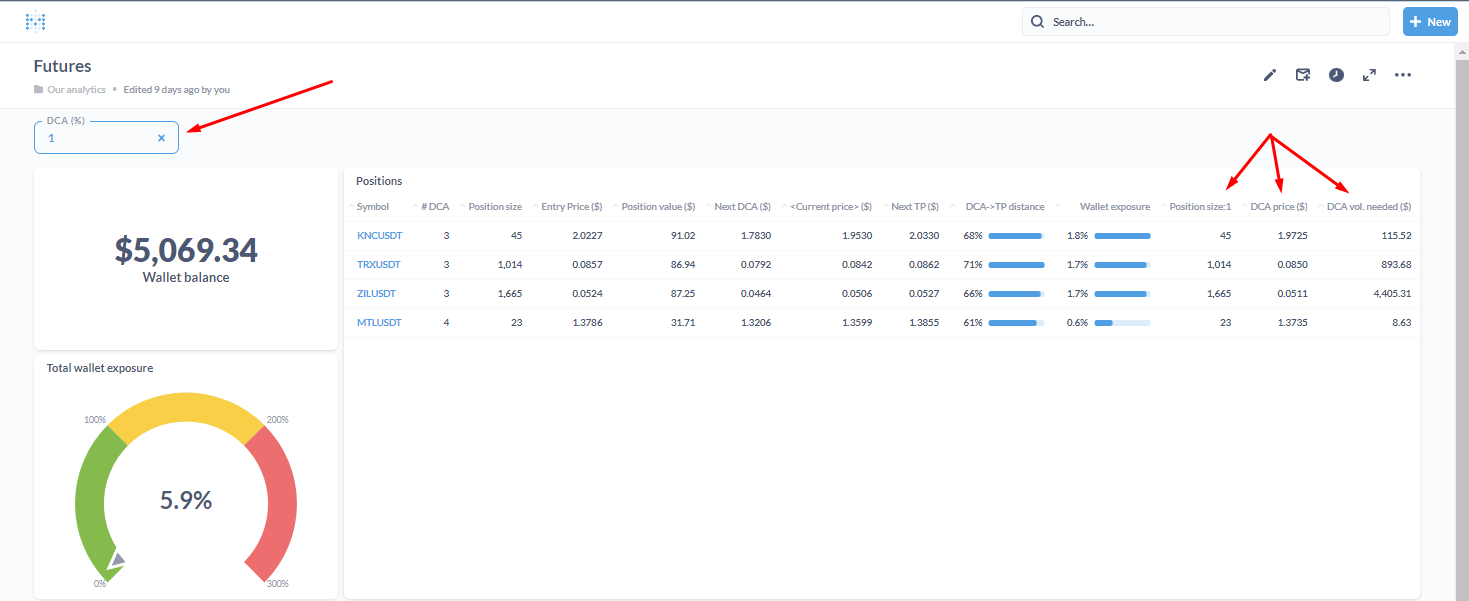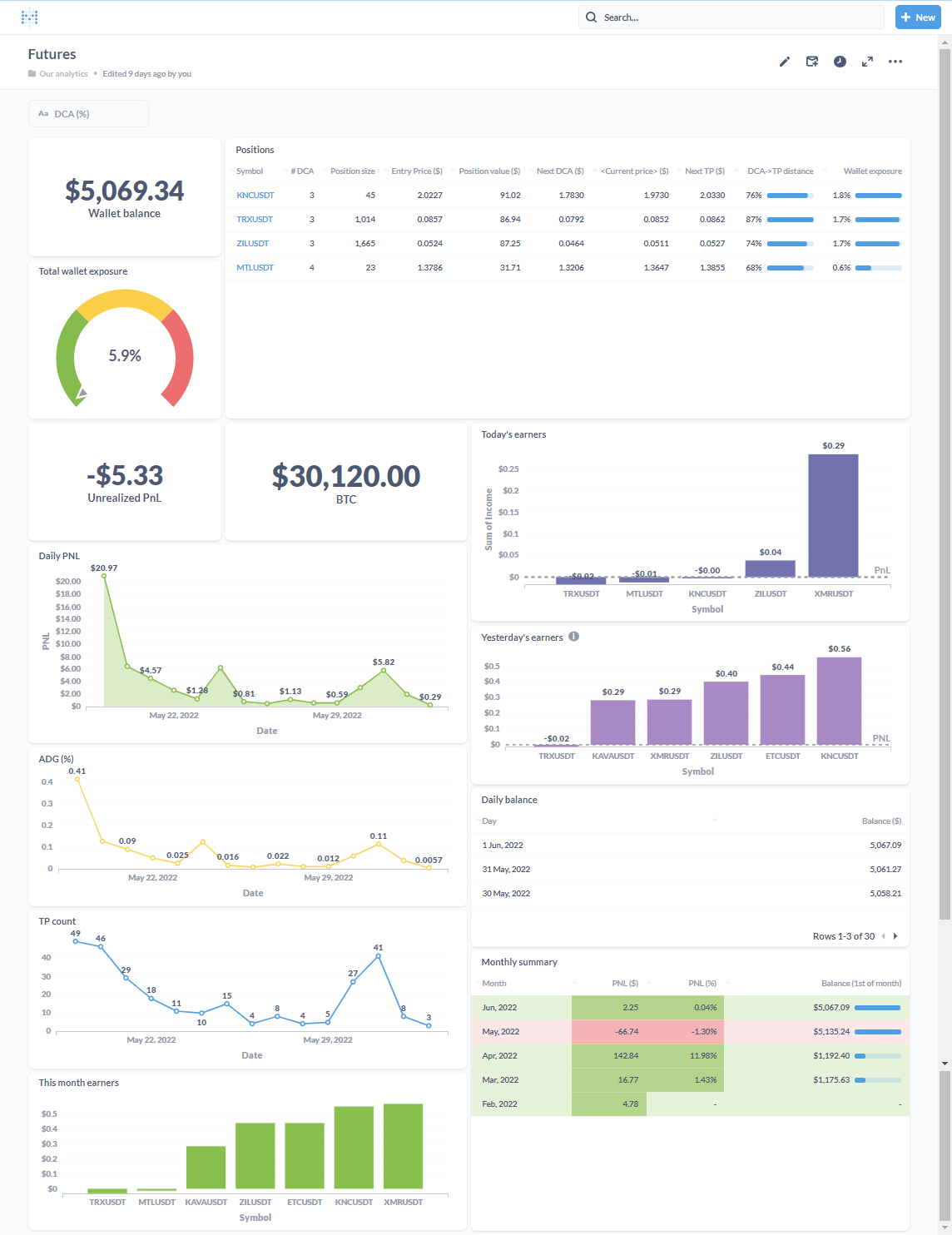This repository is meant to provide an easy-to-run (local) web-UI that provides insight into your account(s) activities on exchanges. It uses a custom script to retrieve data from one or more exchanges (via websocket and/or REST), which is then inserted into a database (sqlite by default). A metabase container is then launched with a default configuration to display this information.
When a value is entered in the DCA field (top left), the DCA quantity and the DCA price (x% above the current price) will be displayed in the additional fields in the table.

- First name: First
- Last name: Last
- Email: exchanges@dashboard.com
- Password: ExchangesDashboard1!
- Department: Department of Awesome
- Database type: SQLite
- Name: Exchanges
- Filename: /data/exchanges_db.sqlite
- Clone this repo:
git clone https://github.com/hoeckxer/exchanges_dashboard.git
- Copy the config.example.json to config.json
cp config.example.json config.json
- Enter the api-key & secret
nano config.json
- Start the dashboard
- Run
docker-compose up -d
- Run
- Go to http://localhost:3000
WARNING: If you change the config.json file, make sure you rebuild the container using docker-compose up -d --build |
|---|
INFO: If you get a message about $PWD being unknown, replace $PWD the docker-compose.yaml file with the full path |
|---|
- Run
docker-compose stop
- If you want to deploy a second dashboard instance on the same machine, please clone the repo and update the
config.jsonanddocker-compose.yamlfiles. - In the
docker-compose.yamlyou'll have to modify container names, exposed port and network interface. An example is provided indocker-compose.yaml.example-second-dashboard
- The metabase image is built for x86. Therefore, on Raspberry Pi, a new image needs to be created using an ARM based image.
- I created a
Dockerfilethat creates this kind of image, which supposed to be identical to themetabaseone. - To use the new image, replace line 13 of
docker-compose.ymlfromimage: metabase/metabase:latesttobuild: metabase_rpi
